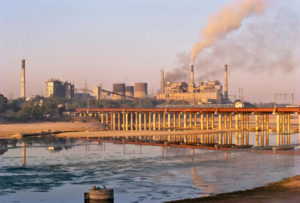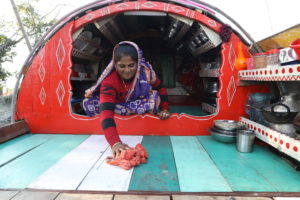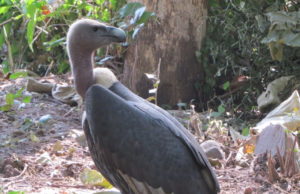The National Remote Sensing Centre (NRSC) of the Indian Space Research Organisation (ISRO) is planning the next cycle of wasteland mapping in collaboration with the Department of Land Resources (DoLR) in the Ministry of Rural Development (MoRD).
Results of the last mapping cycle – carried out in 2015-16 – were released in 2019 as Wastelands Atlas of India. It said 557,665.51 square km (almost 17% of India’s geographical area) is wasteland.
But environmentalists in India question the government’s definition of wasteland.
“It [the wasteland mapping exercise] is not based on any scientific assessment and it’s horribly colonial and archaic, like calling ‘denotified tribes’ robber tribes,” said Abi Vanak, convenor at the Centre for Biodiversity and Conservation at the Ashoka Trust for Research in Ecology and the Environment (ATREE).
“Waterlogged areas and marshes, which are known to be essential for groundwater recharge; mountains under permanent snow, the source of our greatest rivers; savanna grasslands and pasturelands, on which depend the lives and livelihoods of millions of livestock and pastoralists; deserts, sand dunes, rocky outcrops, inselbergs, and plateaus, rich geological features that are also home to a unique set of fauna and flora; are all wastelands according to this atlas. It says approximately 15% of the country is currently lying waste (that’s 46,000 square kilometres, an area larger than Switzerland),” Vanak wrote in the journal Current Conservation.
What is the meaning of ‘wasteland’?
“It [wasteland] is a very value-loaded term because what is waste for one is a resource for another,” said Nityanand Jayaraman, Chennai-based environmental writer and activist. “But what the government is trying to do is cast a dominant definition of what is a wasteland and what it is not onto everybody. In essence, the definition is not publicly agreed upon.”
“If I were asked what a wasteland is,” Jayaraman said, “I would say Dalal Street [which houses India’s main stock exchange] is a wasteland. It is a point of view.”
Arati Kumar-Rao, environmental photographer and writer, noted that ISRO’s Wasteland Atlas includes scrublands that even support elephants.
T. Ravisankar of NRSC confirmed that a fresh mapping exercise is starting. Asked about the ecological criteria behind classifying a piece of land as wasteland, he said that was decided by the rural development ministry. Ravisankar did not respond when asked if NRSC considers the MoRD decision scientifically valid, given the numerous scientific papers that have highlighted the value of open natural habitats like grasslands, snow-covered lands, sand dunes and waterlogged areas.
Questions emailed to Narendra Singh Tomar, India’s rural development minister, on the ecological criteria behind classifying a piece of land as wasteland have not been answered till now. This report will be updated as soon as a response is received.
Diversion of ‘wastelands’ for ‘greening’
By tagging lands as wasteland, the maps enable diversion for other activities.
In some cases, it is tree-plantation activities that enable a takeover of commons by private players. The state government of Madhya Pradesh has reportedly proposed the handing over of 37,420 square km of “wasteland” to private firms for ‘restoration’. Many of the plots are village commons. Since Madhya Pradesh has a sizeable indigenous population, many of these commons are supposed to be specially protected under the Fifth Schedule of India’s Constitution.
But this and similar plans have the support of the very top of the Indian government. At the virtual G20 summit on November 22 last year, Prime Minister Narendra Modi said, “We aim to restore 26 million hectares of degraded land by 2030.” This was a reiteration of commitments made at the 14th summit of the United Nations Convention to Combat Desertification (UNCCD), held in Noida in September 2019.
At the UNCCD summit, Modi had said India’s focus would be on “restoring land productivity and ecosystem services of 26 million hectares of most degraded and vulnerable land, with emphasis on the degraded agricultural, forest and other wastelands, by adopting a landscape restoration approach.”
The question of who will benefit from such ‘restoration’ remains unanswered.
There are times when planting trees in the desert can also have unwanted consequences.
“In the mainstay of the deep Thar, in districts like Jaisalmer and Barmer, there are flocks of sheep and goats which are desert-grazed. So, these ‘wastelands’ are being actively used by local communities,” Kumar-Rao said. “Ironically, there is a thriving economy of animal husbandry [in the Thar] which the government recognises but they [the government] then call it wasteland.”
Who benefits from ‘developing’ a ‘wasteland’ in India?
A lot of the plots classified as ‘wasteland’ and earmarked for either ‘restoration’ or ‘development’ have traditionally been owned and managed by local communities. They include agricultural fields and commons, especially pastures. The question now is, who will benefit from the activities that have been planned in these plots?
“The wasteland categorisation is a very convenient way of parcelling out large tracts of lands for ‘more productive uses’. Land lying in commons or wilderness is not ‘productive’ in a narrow sense [of the term]. But if you convert it to solar farms or agricultural fields or an industrial area or plantations [for timber], it provides for some economic activity,” Vanak explained.
Recently, the government identified 60,000 ha of “wasteland” in Kutch for developing a 41,500 MW renewable energy park.
The wasteland tag “makes it easier to bypass land acquisition laws for ‘greening’ and for industrialisation,” Jayaraman said. “The entire exercise is useful for bypassing democracy.”
Jayaraman referred to recent developments in the Ennore-Pulicat wetland complex in Tamil Nadu. The area comprises various kinds of common lands (locally called Poromboke) where a firm called Marine Infrastructure Development Private Ltd plans to develop a port, a harbour and an industrial area. The firm is a subsidiary of Adani Ports and Special Economic Zone Ltd.
“These lands are grazing lands, fishing lands, lakes,” Jayaraman said. “Adivasi [indigenous] women are making a living out of open, unbuilt Poromboke commons. These lands are outside the ‘modern economy’ and that’s why they are considered as waste. There is a big attempt to privatise these lands. There is a push back from local communities because they don’t want what Adani [Ports] wants.”
Another prominent example is the Kutch region of Gujarat. Large areas of Kutch are classified as wasteland in the last edition of the atlas. But in reality, Kutch is a unique ecosystem of scrub savannahs, grasslands, saline flats and mangroves.
“Tons of [migratory] birds visit Kutch each year; there are salt pans, there are pastoralists… how can you call it a wasteland and commission massive solar and wind farms?” Kumar-Rao asked. “It’s like sitting in an ivory tower and making plans for an area you know nothing about.”
![<p>Wildlife in a marsh at the Ranthambore National Park, Sawai Madhopur, in Rajasthan, India. [image by: Van der Meer Marica / Alamy]</p>](https://dialogue.earth/content/uploads/2021/02/CWKDWC.jpg)
![Upendra Prasad Singh, the Union Secretary for Water Resources [image courtesy: Jal Shakti Ministry]](https://dialogue.earth/content/uploads/2019/07/UP_Singh_Photo_Jal-Shakti-Ministry-1-300x164.jpg)






